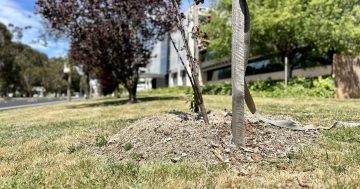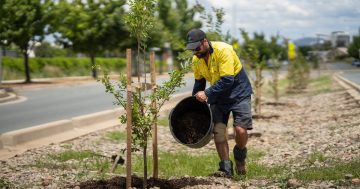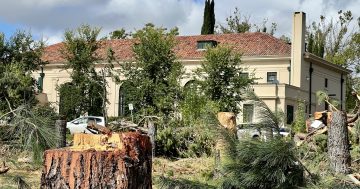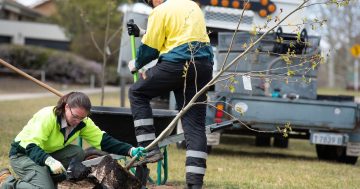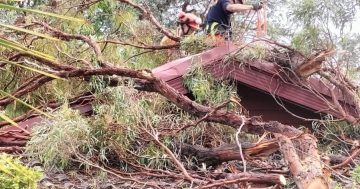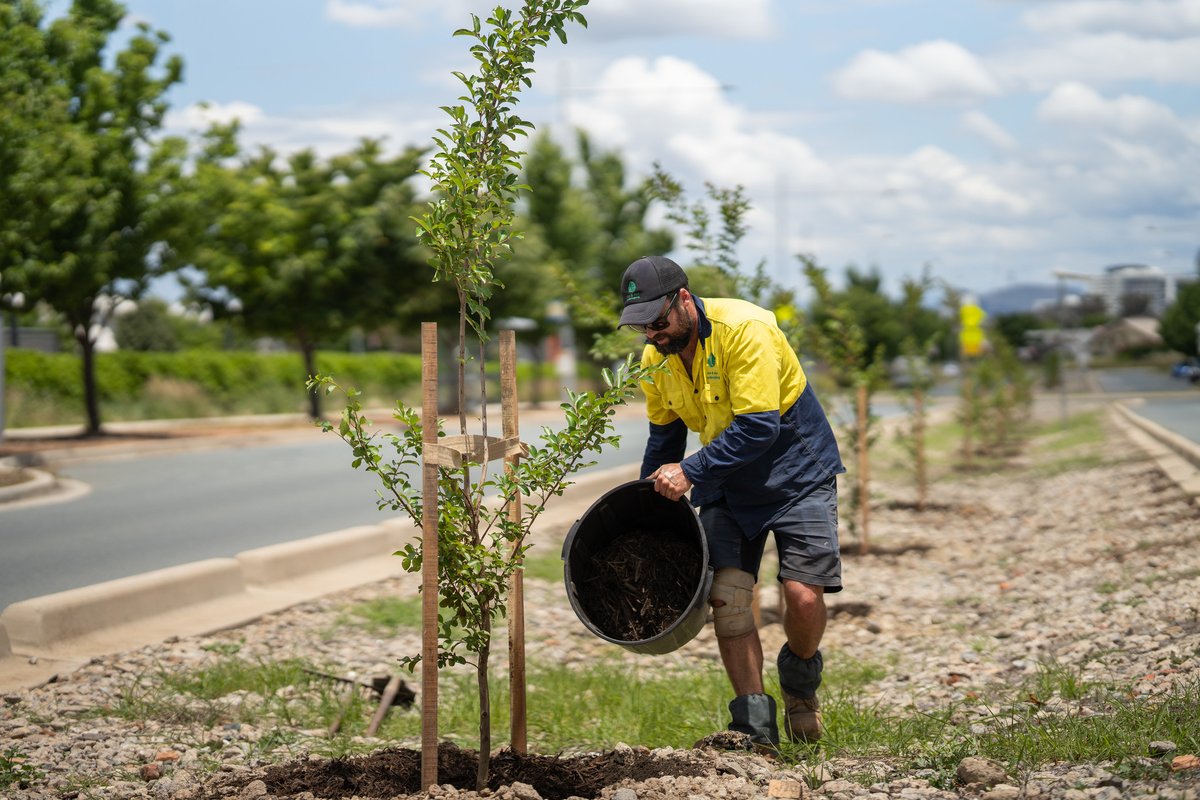
The ACT Government wants to grow Canberra’s tree canopy coverage to 30 per cent by 2045. Photo: ACT Government.
Remember the days when you’d have to plant two new trees on your block for every established tree the government allowed you to remove?
Or pay a “financial contribution” of $1200 per tree removed if the government determines it “will not be possible to replant on the site”.
Well, there are changes to the ACT’s tree protection laws afoot “in the coming weeks”. But maybe don’t oil your chainsaw just yet.
The current laws came into effect on 1 January 2024 when the Tree Protection Act 2005 became the Urban Forest Act 2023 as part of a push to grow the city’s tree canopy cover to 30 per cent by 2045 (it’s currently around 20 per cent).
The rules became stricter: trees at least eight metres high (12 metres under the old Act) or with a circumference of at least one metre (1.5 metres formerly) are now protected – yes, even if they’re on private property.
And the penalties became higher.
A person who intentionally damages a protected tree will face a fine of up to $80,000 – up from $64,000.
But it turns out not everyone was happy with this.
“Following feedback since the legislation commenced, several amendments will be made to improve the Act’s operation without compromising on its objectives,” the government announced this week.
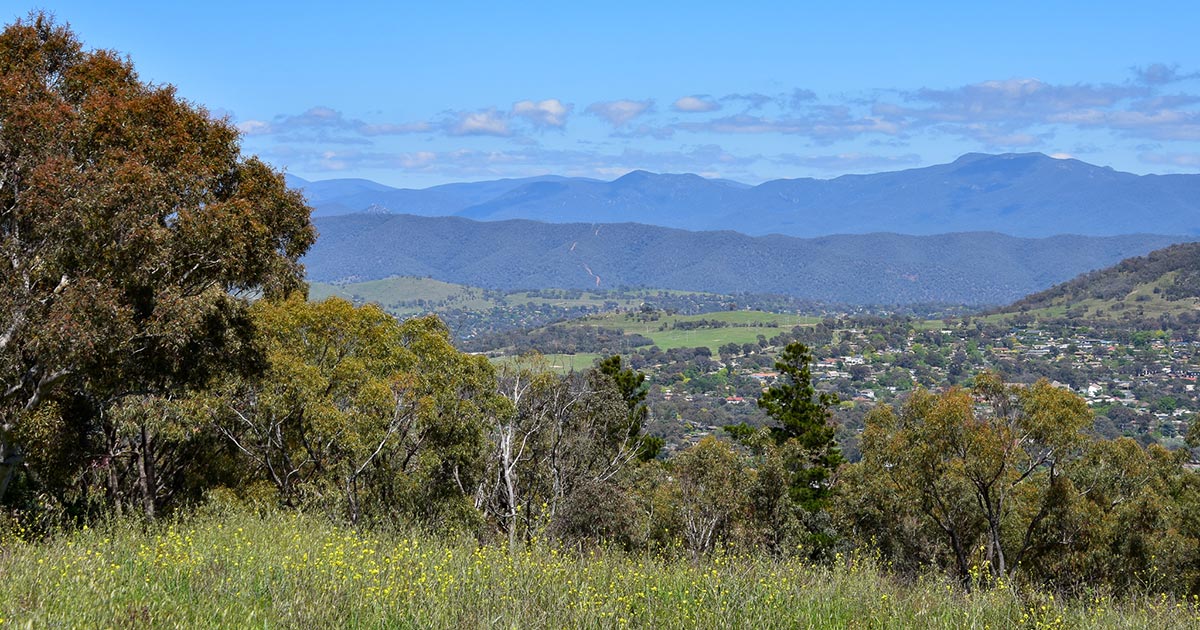
Isaacs is the ACT suburb with the highest percentage of tree cover. Photo: ACT Government.
From now on, anyone whose block has a canopy cover of 30 per cent or more after the protected tree is removed will be exempt from having to plant replacements “if it is not feasible” (for example, they don’t have the space).
The government says it has also improved its approval systems to “reduce the average timeframes for processing tree activity applications”.
Yeah, they’re the only changes.
Between 1 January and 30 June, the ACT Government received 1145 requests to remove protected trees, 313 of which were rejected.
Minister for City Services Tara Cheyne said the government wants to make sure the rules are “supporting our tree canopy goals while not imposing an unnecessary burden”.
“We are addressing these issues now because they have been identified as unintended consequences of the drafting,” she said.
She also flagged another review of the rules in two years for “additional improvements”.
Around 500,000 new trees will need to be planted over the next 22 years, at a rate of around 22,700 per year, to meet the government’s target of 30 per cent cover.
Ms Cheyne said the target for the past year was exceeded, with more than 23,000 trees planted in urban Canberra over 2023-24.
“This brings the total number of trees planted since June 2020 to over 65,000, well above the target of 54,000 set in the Urban Forest Strategy,” she said.
In 2023-23, however, planting crews fell short of the 18,000 target by 5350 trees. This was attributed to a “variety of factors”, including procurement delays, limited contractor availability, persistent wet weather, limitations on suitable planting sites, as well as “refusal of street tree plantings by adjacent residents”.
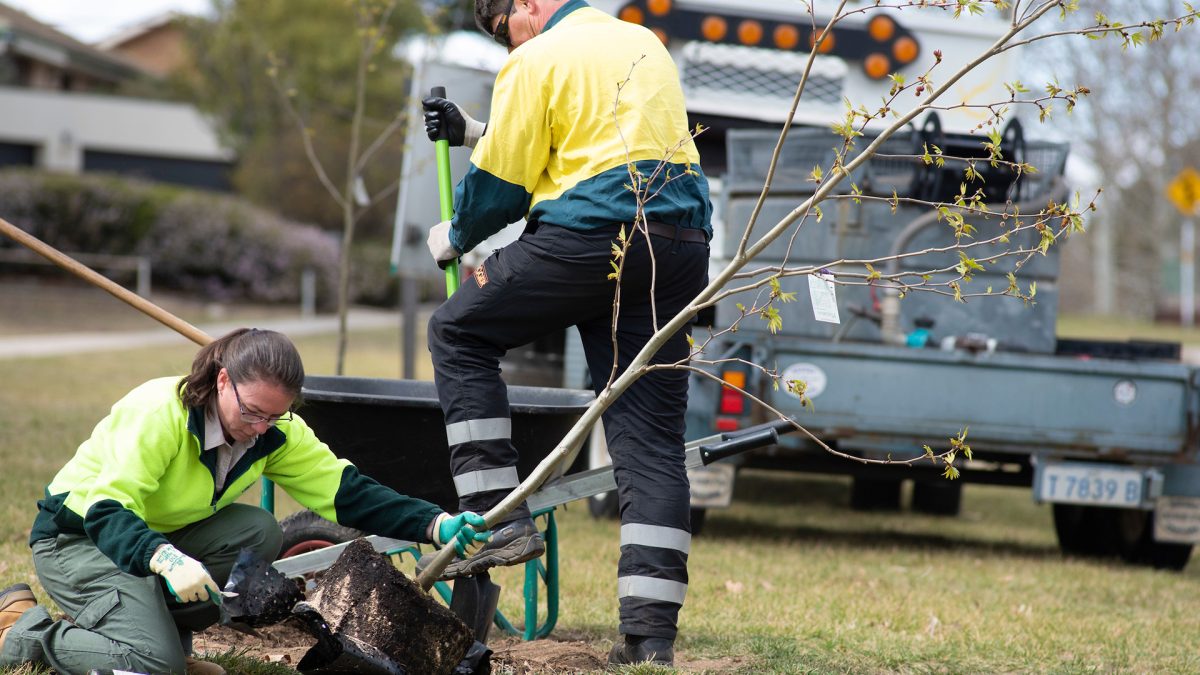
TCCS workers planting trees. Photo: ACT Government.
The government has since “bolstered” the team of staff who tend the trees and promised “greater strategic focus to planting”.
“These new plantings have focused on providing trees to fill gaps in residential streets in areas vulnerable to heat, with low levels of canopy cover and where canopy levels are decreasing due to trees reaching the end of their life,” Ms Cheyne said.
For instance, plane trees will be planted “sparingly” from now on after a 2019 ANU report found that while “a beautiful streetscape addition and hardy to drought and frost”, they have their fair share of problems.
“There are considerable allergen concerns, in addition to an aggressive root system which damages pavement and infrastructure, dropped seeds which cause trip hazards, and release of irritants,” the government says.
A spokesperson for the Transport Canberra and City Services (TCCS) directorate has previously told Region the government is “open” to discussions over what species homeowners would prefer around their block.












